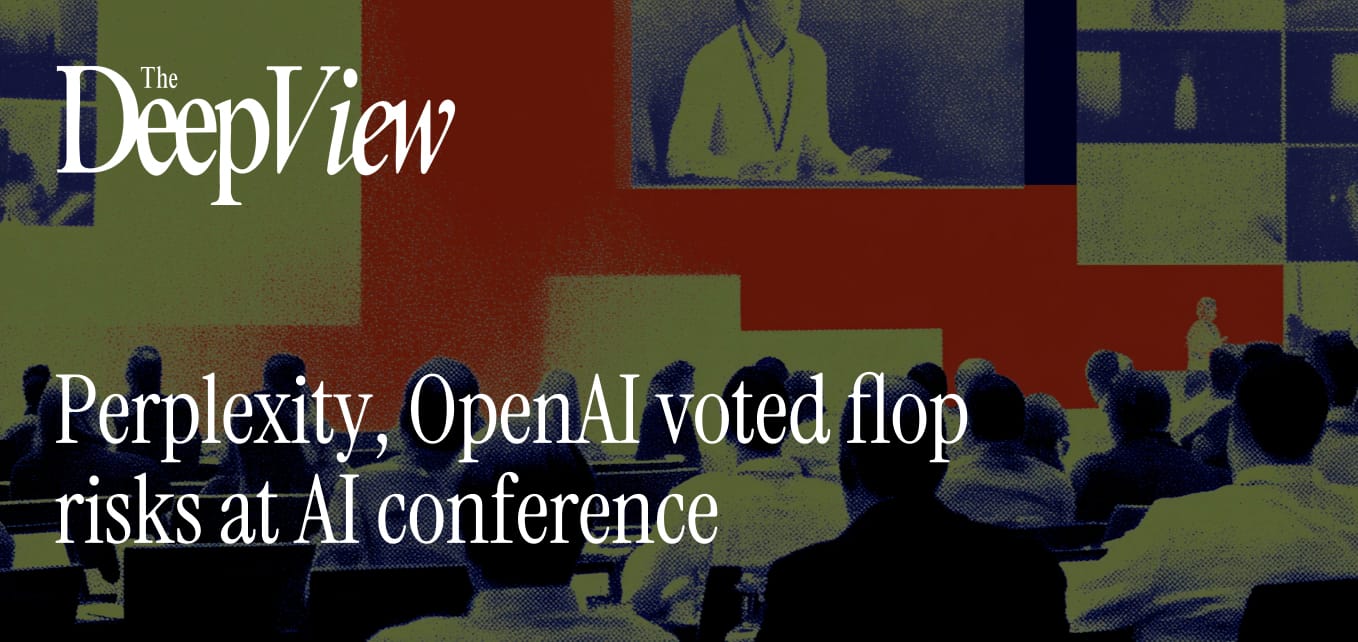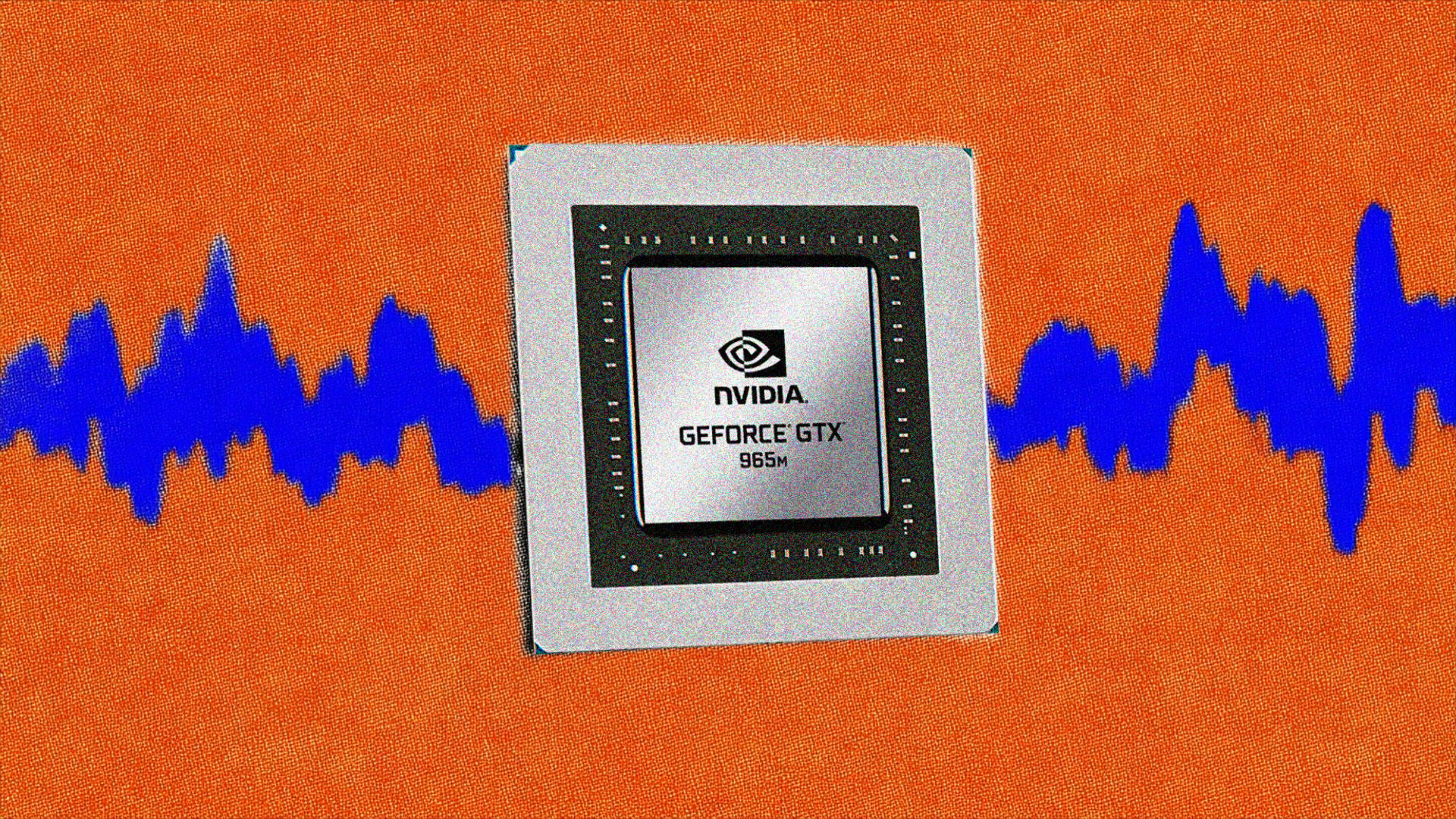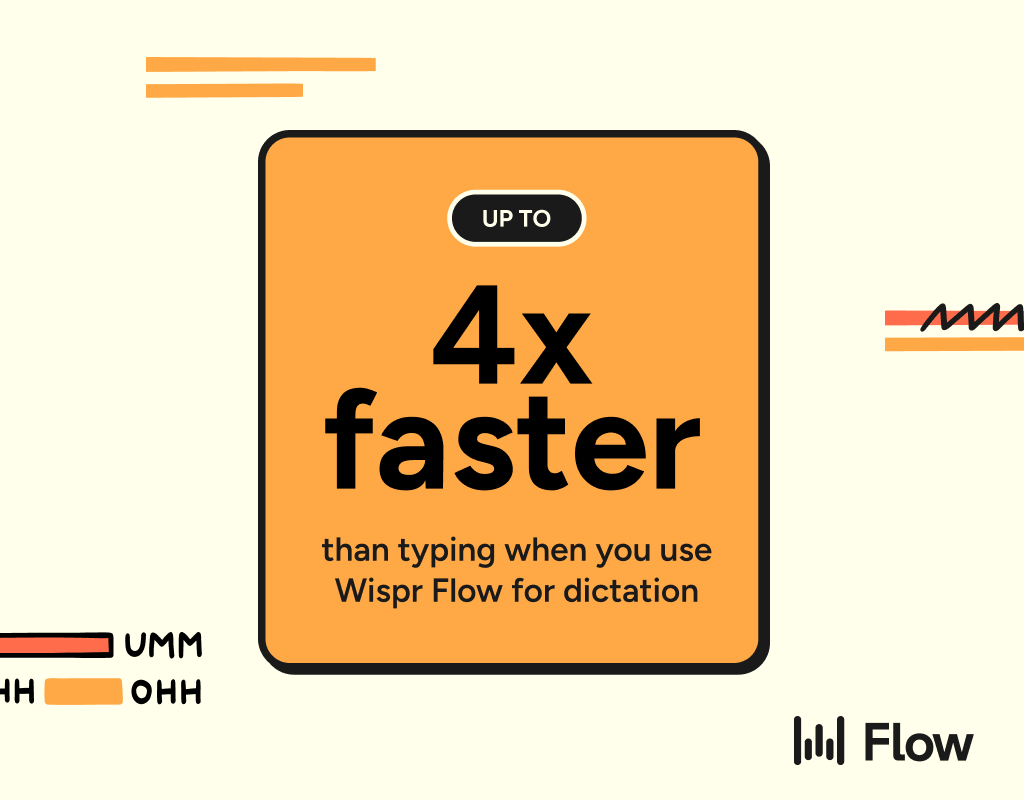- The Deep View
- Posts
- Perplexity, OpenAI voted flop risks at AI conference
Perplexity, OpenAI voted flop risks at AI conference

Welcome Back. Jeff Bezos is getting his hands dirty again. The Amazon founder is working on an AI startup called Project Prometheus, focusing on the physical AI applications like robotics and drug discovery. The company reportedly has $6.2 billion in funding, according to The New York Times. Bezos has been hands-off from formal operational roles since stepping down as Amazon CEO in July 2021. But amid the AI fray, it seems, he once again wants to do the work.
1. Perplexity, OpenAI voted flop risks at AI conference
2. AI starts to think smaller
3. Investors turn on Nvidia
MARKETS
Perplexity, OpenAI voted flop risks at AI conference

Perplexity and OpenAI may have gotten the worst superlatives AI companies can get.
At the Cerebral Valley AI Conference this weekend, an informal survey of more than 300 attendees organized by journalist Eric Newcomer found that Perplexity, followed by OpenAI, was voted most likely to flop.
These companies, along with the rest of the AI market, seek to cement strong enough revenue streams to break even. But the sentiment that Perplexity and OpenAI may struggle with this is “spot on,” Scott Bickley, advisory fellow at Info-Tech Research Group, told The Deep View. However, these firms may topple for different reasons.
Perplexity’s success hinges on getting consumers to actually buy into its services, said Bickley. But the startup also relies on other foundational models, including those from OpenAI, Anthropic and Google.
And with so many other options clouding the consumer market, namely the ever-popular ChatGPT, “the question is, what makes me want to go to Perplexity and pay to have the benefits of their deep search capabilities versus what is provided in Google with Gemini for free?”
While OpenAI’s situation is far more complex, given the $1.4 trillion in AI infrastructure commitments it’s signed onto, the company still faces the “conundrum on the consumer side,” said Bickley. “There's going to be limited dollars that someone's willing to spend on a subscription,” he said.
The value add for a consumer has to be significant, said Bickley, especially in OpenAI’s case. In order to emerge from the red, OpenAI may need to become a “super app,” he added, offering multiple functionalities in one ecosystem, such as ecommerce, communication and entertainment.
And this may be part of its grand plan: In an interview with Wired published Monday, OpenAI’s CEO of Applications, Fidji Simo, said ChatGPT could “give everyone a team,” including a personal shopper, a travel agent, a financial adviser, a health coach and more, wrapped into one. “If we build that, I assume that people are going to want to pay a lot of money for that, and that revenue is going to come.”

OpenAI and Perplexity could take the route well trodden by its tech forefathers in making money off consumers: Advertising. Digital ads are how Meta and Google have made the billions upon billions of dollars that support their own expensive AI endeavors. Ramping up those efforts could help these firms gain returns far more quickly than they would from subscription revenue.
But OpenAI in particular faces a far more daunting task. Given the sheer amount of money it’s signed on to spend, even with its efforts spread across consumer and enterprise plans, Bickley noted, “how many hundreds of millions of users do you need to bring those revenues up to a point where (its investments) make sense?”
TOGETHER WITH OUTSKILL
AI was the most in-demand skill of 2025, according to the World Economic Forum. But how many of us actually mastered it before 2026?
As Black Friday hits and everyone chases deals, here’s something better:
Join Outskill's LIVE 2-day AI Mastermind — 16 hours of intense training on AI tools, automations, and agent building to help you work smarter and become a top asset in 2025.
It’s happening this Saturday & Sunday. Normally $395, but as part of their Black Friday Sale, you can join completely FREE.
Rated 9.8/10 on Trustpilot, this Mastermind helps you become an AI Generalist who can build, solve, and work on anything with AI.
You’ll learn how to:
Use AI to cut daily tasks by 70%
Build AI agents that plan, create, and automate with 10+ tools
Create automations that connect Sheets, Notion, CRMs & mor
Access ready-to-use AI systems for your job, business, or clients
Instead of chasing discounts, join the crash course that brings in big $$.
🧠 Live sessions: Saturday & Sunday
🕜 10 AM–7 PM EST
🎁 Plus: $5,000+ in bonuses — prompt bibles, AI monetization roadmap, and a personalized AI toolkit builder, all FREE when you attend.
RESEARCH
AI starts to think smaller

Bigger isn’t always better.
As large language models continue to add zeros to their parameter counts (and their costs), some developers may be setting their sights smaller. Small models are gaining traction as companies seek to cut costs and focus on niche AI applications.
While large language models have the benefit of general intelligence, a jack of all trades is a master of none. Small models, or those with parameter counts in the millions to low billions rather than the trillions, may outperform larger ones at niche tasks.
These models have become a focus area for both Big Tech companies and startups, with Meta, Microsoft, Google and OpenAI all debuting their own mini offerings.
Investors have taken a liking to the space, too: Companies like Mistral AI, Liquid AI and Sakana (which closed a $135 million Series B round on Monday) have all hit unicorn status as they rake in funding for lightweight and niche models.
And research from IBM released in recent weeks November, shows that these models may also be better at staying focused.
When comparing how small language models performed against their larger counterparts on a number of financial-related tasks, the small models were able to avoid drift, achieving “100% output consistency,” challenging the common belief “that larger models are universally superior for production deployment.”
The number one reason that these models are so popular is cost, Dan Herbatschek, CEO and founder of Ramsey Theory Group, told The Deep View. These models are both cheaper to build and run, often requiring fewer GPUs and the capability to operate with CPUs or mobile hardware. “This fits well with a small AI budget,” he said.
These models also tend to be more secure and less resource-intensive, making them easier to deploy in agents and edge cases where compute power is limited, Chuan Qiu, founder of Velda, told The Deep View. “Being real-time (and) protecting privacy are crucial for these cases,” Qiu noted.
TOGETHER WITH WISPR
How To Quadruple Your Efficiency
We’re always looking for ways to work smarter, not harder – so when we were told there was a way to 4x our writing output with a single app, our ears perked up (and our finger muscles relaxed).
The secret is in a voice-powered AI keyboard called Wispr Flow, which has perfected the art of speech to text. By flawlessly integrating with every application on your iPhone or computer and using AI to master the art of editing on the fly, Wispr Flow allows you to write up to 220 words per minute (more than quadruple the standard output of about 45 wpm).
It works from anywhere – Slack on your iPhone, Notion on your MacBook, Word docs on your Windows PC – and in over 100+ languages, meaning no keyboard will ever hold you back again. Try Wispr Flow for yourself right here
MARKETS
Investors turn on Nvidia

Major investors may be backing away from Nvidia.
Peter Thiel’s hedge fund, Thiel Macro, zeroed out its stake in Nvidia in the third quarter, selling off more than 537,000 shares, a pot worth $94 million, according to regulatory filings reported on Monday.
The move follows similar selloffs in the past week:
SoftBank sold off its entire stake in Nvidia, around 32.1 million shares worth more than $5.8 billion. The funds will reportedly be used to support a $22.5 billion investment in OpenAI, according to CNBC.
And Scion Asset Management, the fund run by Michael Burry, who gained his fame predicting and profiting from the subprime mortgage crisis in 2008, revealed $1.1 billion in put options for Nvidia and Palantir stocks.
Nvidia has largely been the biggest winner of the AI race thus far. Its hotly demanded chips have boosted its revenue to astronomical heights, with Jensen Huang revealing in October that the company has $500 billion in orders combined for 2025 and 2026 at the company’s GTC conference in Washington, and briefly surpassed a record-breaking $5 trillion market cap in late October.
But as discussions of an AI bubble grow, these sell-offs could be a sign that faith is beginning to waver. Investors have raised concerns that the circular financing deals between Nvidia, OpenAI and other tech firms are artificially propping up the industry.
And tech leaders themselves have been flagging concerns of Nvidia’s involvement in the burgeoning bubble: On Monday, Klarna CEO Sebastian Siemiatkowski told The Financial Times that Nvidia’s stock boom makes him “nervous” due to “the amount of wealth that is currently automatically allocated into this trend, without some more thoughtful thinking.”
LINKS

Fintech firm Ramp hits $32 billion valuation after $300 million funding round
DeepMind unveils faster, more accurate AI weather model, targeting energy traders
Cloudflare acquires AI platform Replicate for an undisclosed sum
Nvidia, ARM partner on AI chip, custom infrastructure integration
CISA will increase hiring efforts in 2026 in preparation for China conflict
AI Super PAC targets New York Democrat Alex Bores over AI safety legislation

Grok 4.1: A new frontier model from xAI, pushing standards for conversational intelligence, emotional understanding and “real-world helpfulness.”
Google AI Flight Deals: Google has embedded AI into its flight booking platform and added the ability to organize travel plans using its Canvas AI tool.
Flora V2: A new model to power an AI creative canvas for workflows, designs and campaigns
Castari: An AI agent builder that manages your infrastructure to deploy agents from sandbox to production.
Blimp: A no-code workflow automation tool, allowing non-technical users to leverage AI for their busywork.

Anthropic: Privacy Research Engineer, Safeguards
Capital One: Applied Researcher I (AI Foundations)
SoFi: Senior AI Specialist - Gen AI, NLP
Amazon: Sr AI Language Engineer, Amazon Rufus
POLL RESULTS
Will AI coding tools like Cursor and Lovable ultimately create more coding jobs than they eliminate?
Yes (20%)
No (30%)
Break even (22%)
Too early to tell (28%)
The Deep View is written by Nat Rubio-Licht, Faris Kojok and The Deep View crew. Please reply with any feedback.
Thanks for reading today’s edition of The Deep View! We’ll see you in the next one.

“The guy in the fake one looks off. I can’t explain it, but he just doesn’t look real” “Hands were holding the bows correctly in [this image].” “The fake picture shows the violin floating below the guy's chin. This was an easy pick.” |
“I should have went with my first instinct. That guy's hair just didn't look right. But the hand in [the other image] also looked off, but I forgot to consider that violinists ’s hands do often need to be in unnatural positions.” “The coloring on this image just looked more like what I would expect” |

Take The Deep View with you on the go! We’ve got exclusive, in-depth interviews for you on The Deep View: Conversations podcast every Tuesday morning.

If you want to get in front of an audience of 450,000+ developers, business leaders and tech enthusiasts, get in touch with us here.






